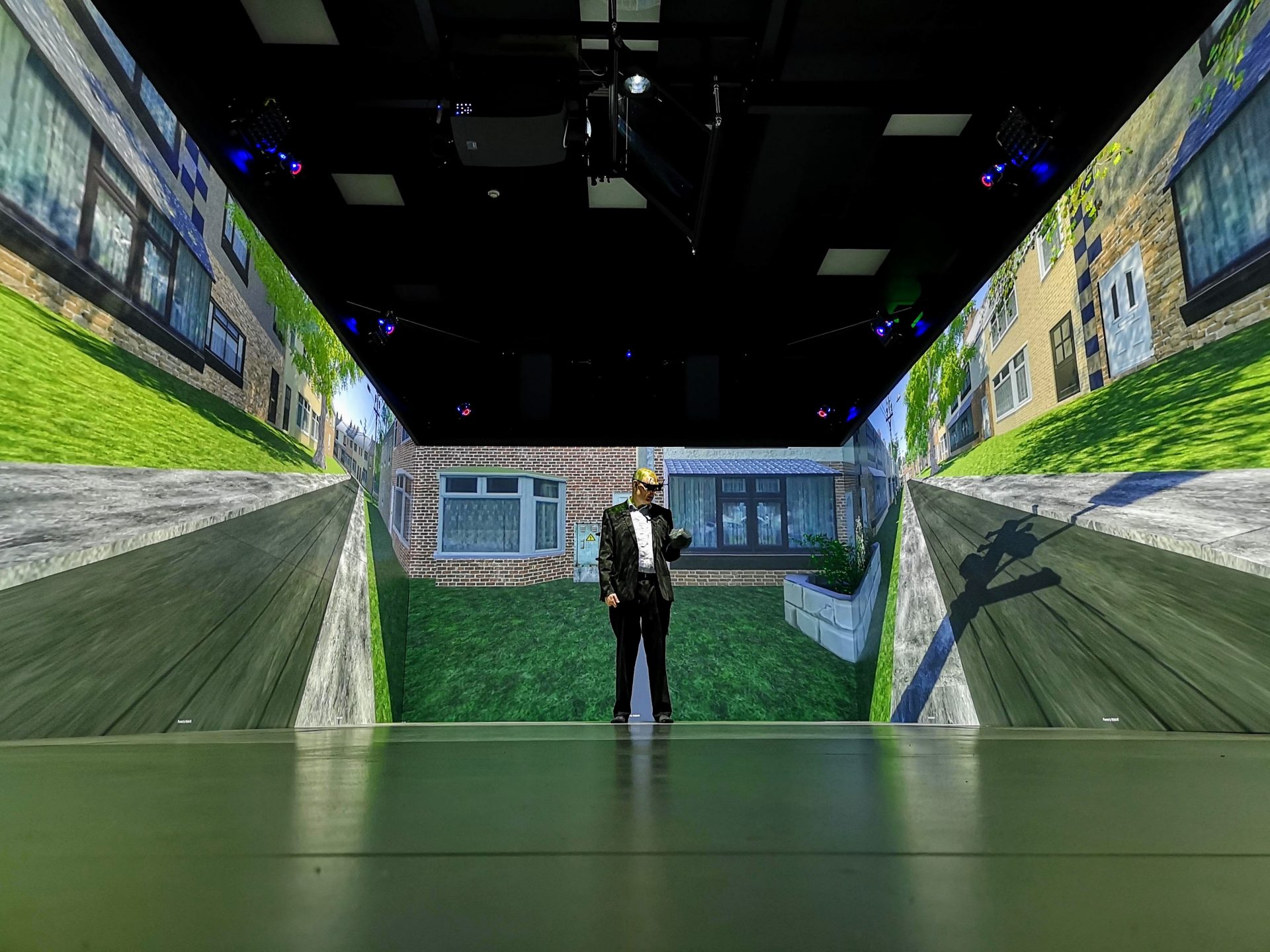Highly Immersive Kinematic Experimental Research (HIKER) pedestrian lab

The Highly Immersive Kinematic Experimental Research (HIKER) lab is the largest, ‘CAVE-based’ pedestrian simulation environment of its type in the world. The HIKER lab allows participants to interact with a variety of urban environments and vehicles in a 9 x 4 m walking space with a level of real-world performance that is not possible using head-mounted Virtual Reality equipment.
The walls of the HIKER lab are plate glass with rear projection from an array of 4k projectors, with the whole scene responding to the participants head position and gaze. The result reproduces VR without the need for research participants wearing a VR headset, the use of which might undermine experiments that need to capture fine movements in real time. A notable example of this is the need for accurate split-second measurement of the interaction of people and vehicles in life-threatening situations. Safe pedestrian interaction with Autonomous Vehicles is a key current example of the research contribution of the HIKER lab
The HIKER lab supports safe experimental research in a repeatable fashion in which a variety of variables can be varied with respect to a wide range of research questions – including Automated Vehicle design and human interaction, warning system design, and road crossing and intersection configuration. As a result, we can contribute to the design of sustainable cities which meet the needs of future populations.
As new and unique research asset for the UK, We are keen to explore many more innovative and imaginative research applications for the HIKER Lab with our partners and friends.
For further information visit Collaborate or contact our general email on virtuocity@leeds.ac.uk .
